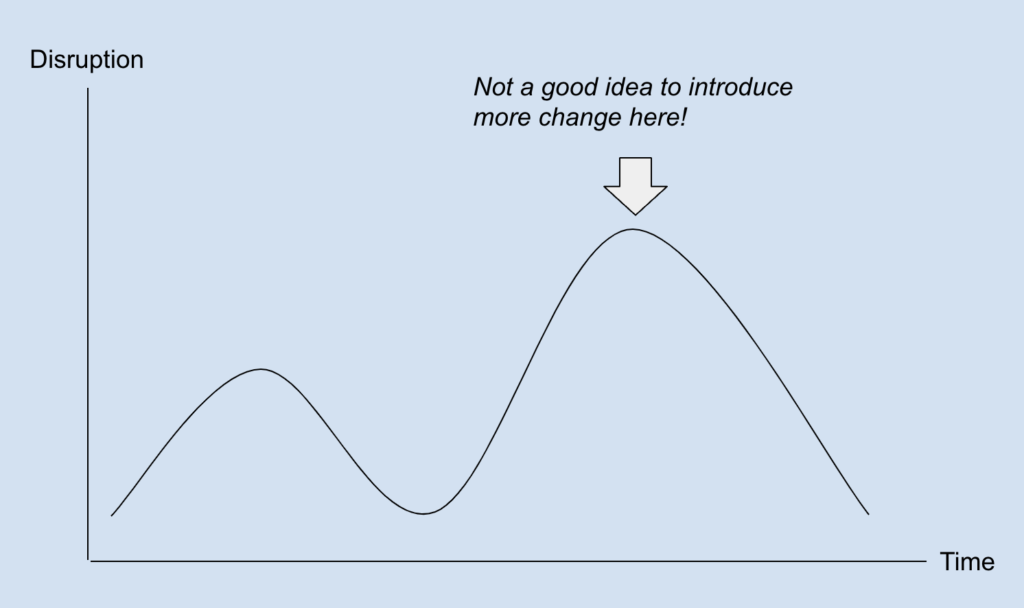The COVID-19 pandemic has brought about unprecedented changes in various aspects of our lives, and it’s important to understand the impact of change and how to handle it effectively. Dr. Britt Andreatta, an expert in leadership and learning, shares her insights on this topic.
One of the key issues with change is that not all change is created equal. Some changes are minor, and we can quickly adapt to them, while others are more significant and can take a lot of time to acclimate to. Dr. Andreatta suggests using a “Change Matrix” to assess the impact of change on individuals and teams. This matrix maps the amount of disruption to the time required for acclimation. By understanding how each change affects individuals, we can plan better and manage change effectively.

The brain’s resistance to change is also a critical factor to consider. The brain is wired for three things: survival, belonging, and becoming our best selves. Change can often trigger our survival instincts, causing us to resist it. The brain’s GPS system and habits also play a role in our response to change. It’s essential to understand how the brain works and why people react to change the way they do to manage change effectively.
Leaders play a crucial role in managing change, and they can fall into one of three categories: expedition designers, trailblazers, or guides. Each of these roles has a unique perspective on change, and they must work together to manage change effectively.
Change is the only constant in life, and it is evident that organisations are constantly undergoing changes. However, not all changes are equal, and the effectiveness of change initiatives is not always guaranteed. In fact, research shows that 50-70% of change initiatives fail. Therefore, assessing the impact of change and understanding the brain science of resistance are critical for successful change initiatives.
Assessing the impact of change is essential as not all changes are the same, and different types of changes require varying levels of acclimation. Factors that influence the level of acclimation required include the amount of disruption, the total number of changes, and the duration of the change. To effectively manage change, organisations can use a change matrix that maps individuals’ capacity for change against the amount of change happening.
Emotions also play a significant role in the success of change initiatives. When change is announced, people often experience shock, fear, and denial, which may progress to stress, anger, frustration, depression, and confusion. Therefore, change leaders must plan how people are going to react to change and focus on the potential gains and state of hope to shorten the duration and lessen the disruption.
The brain is wired to resist change, and it is predisposed to survival, belonging, and becoming the best selves. To successfully lead change initiatives, leaders must understand the brain’s resistance to change, which is influenced by the fear, GPS, habits, and failure parts of the brain.
Change fatigue is another critical issue to consider when leading change initiatives. Research shows that 47% of senior executives experience change fatigue, which leads to disengagement, exhaustion, absenteeism, confusion, conflict, and cynicism.
Change leaders can mitigate change fatigue by involving detractors and non-active participants, controlling the narrative, and managing resistance to change.
Effective change leadership involves three main types of leadership roles: expedition designers, trailblazers, and guides. Expedition designers have a long view of the organisation and are responsible for designing the change initiatives. Trailblazers enable change to happen by doing something before the change occurs, while guides, often managers and supervisors, lead people through the change.
Change is inevitable, and the success of change initiatives depends on the human side of change. Change leaders must understand the brain’s resistance to change, assess the impact of change, control the narrative, and manage resistance to change. Additionally, they should focus on involving all stakeholders in the change initiatives and ensuring effective handoffs between the leadership roles. Finally, to mitigate change fatigue, change leaders should focus on creating a culture of positivity, celebrating progress, and milestones, and holding people accountable for their goals.
Communication is also critical when it comes to change management. Leaders must control the narrative and involve detractors early to avoid resistance and address the concerns of non-active participants.
The pandemic has brought about significant changes, and people have been struggling to cope with the changes, leading to burnout. It’s essential to pay special attention to burnout and provide support to individuals and teams going through significant changes.
Change is a journey, and it’s important to understand the impact of change and how to handle it effectively. By understanding the science behind change and the role of leaders, we can manage change effectively, minimize resistance, and ensure a smooth transition to the new normal.




